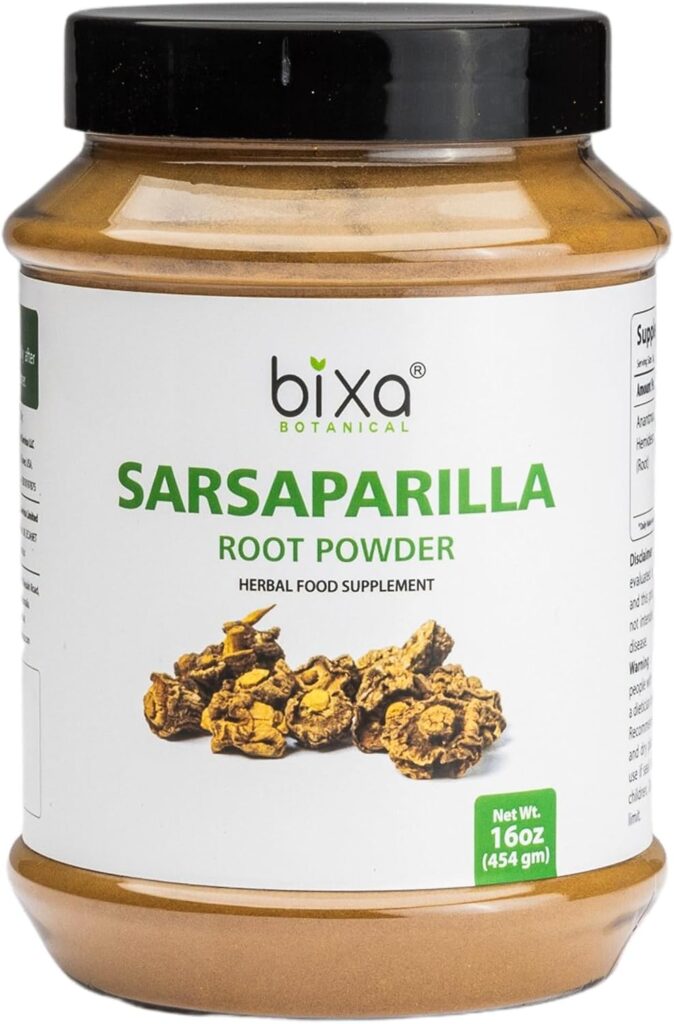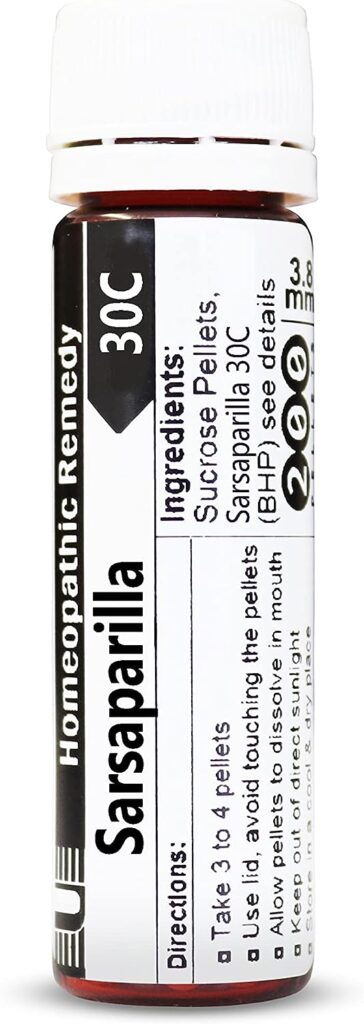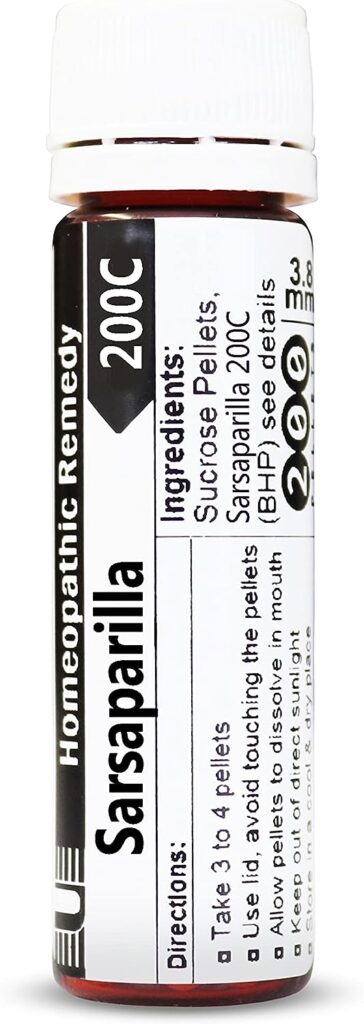General Information
Sarsaparilla, derived from various species of the Smilax genus, particularly Smilax officinalis, Smilax japicanga, Smilax febrifuga, Smilax regelii, Smilax aristolochiaefolia, Smilax ornata, and Smilax glabra, is a tropical plant with a rich historical background in traditional medicine. This climbing, woody vine thrives in the dense canopy of rainforests and is indigenous to regions such as South America, Jamaica, the Caribbean, Mexico, Honduras, and the West Indies. Throughout history, indigenous communities globally harnessed the therapeutic potential of the sarsaparilla remedy’s root, employing it in the treatment of diverse ailments, including joint disorders like arthritis, various dermatological conditions such as psoriasis, eczema, and dermatitis, and even the formidable Hansen’s disease (leprosy), owing to its purported blood-purifying properties. Subsequently, sarsaparilla was integrated into European medical practices and was officially listed as an herbal remedy in the United States Pharmacopoeia for the management of syphilis.

Alternative Names for Sarsaparilla
The nomenclature of the sarsaparilla remedy varies with language and geographic location, giving rise to a multitude of names, including salsaparrilha, khao yen, saparna, smilace, smilax, zarzaparilla, jupicanga, liseron epineux, salsepareille, sarsa, and ba qia.
Historical Notions: Sarsaparilla as a Traditional Remedy
One prominent historical use of sarsaparilla lies in its efficacy in addressing the skin condition, psoriasis. Decades ago, studies documented sarsaparilla root’s profound impact on individuals afflicted with psoriasis, with notable improvements observed in skin lesions. Researchers postulated that sarsaparilla’s principal steroid, sarsaponin, could potentially bind to the endotoxins responsible for psoriasis lesions, facilitating their elimination from the body.
Furthermore, sarsaparilla, esteemed for its potent anti-inflammatory properties, has found application in managing inflammatory conditions, including rheumatoid arthritis and gout, characterized by joint pain and swelling. Its versatile antimicrobial activity has rendered it historically significant in the treatment of formidable diseases like Hansen’s disease (leprosy) and syphilis. Recent studies have further confirmed its antimicrobial prowess, showcasing its effectiveness against various bacteria and fungi.

Recent investigations have unveiled sarsaparilla’s anticancer properties, evident in its ability to inhibit the growth of multiple cancer types in cell lines and murine models. Emerging preclinical studies suggest that sarsaparilla may hold promise in cancer prevention and treatment. Additionally, research in rodents with liver damage highlights sarsaparilla’s hepatoprotective effects, as flavonoid-rich compounds from sarsaparilla exhibit the capacity to ameliorate liver damage and enhance liver function.
Historical Significance in Syphilis Treatment
Sarsaparilla’s historical association with the treatment of syphilis casts a fascinating light on its therapeutic potential. Syphilis, a sexually transmitted bacterial infection caused by Treponema pallidum, wreaked havoc across history, leading to the exploration of various remedies for its management. Sarsaparilla emerged as one such remedy, utilized for centuries in indigenous medicine systems for its purported antimicrobial and blood-purifying properties.
Throughout different cultures, sarsaparilla was held in high esteem for its potential to combat harmful microorganisms, including bacteria. The indigenous communities’ use of sarsaparilla in treating not only syphilis but also Hansen’s disease (leprosy) attested to its perceived potency against grave infections. This historical utilization laid the foundation for its later integration into European and American medical practices.

Sarsaparilla’s Role in Herbal Synergy and Bioavailability Enhancement
Sarsaparilla often assumes the role of a synergistic agent in herbal mixtures, enhancing the bioavailability and absorption of other herbs. Its saponins are believed to facilitate this effect.
Potential Risks and Controversies
Sarsaparilla is generally considered safe for consumption; however, it is not immune to the pitfalls of fraudulent marketing and misinformation. Erroneous claims have led to the misrepresentation of sarsaparilla supplements, which have been falsely advertised to contain anabolic steroids like testosterone. While laboratory synthesis of plant steroids found in sarsaparilla into these anabolic steroids is plausible, such conversion has not been documented within the human body. It is important to exercise caution when assessing bodybuilding supplements that contain sarsaparilla, as its root’s anabolic effects remain unsubstantiated.
Furthermore, sarsaparilla should not be confused with Indian sarsaparilla (Hemidesmus indicus), which, while occasionally included in sarsaparilla preparations, lacks the active chemical constituents of sarsaparilla from the Smilax genus.
Contemporary Insights and Antimicrobial Activity
Modern investigations have corroborated the antimicrobial prowess of sarsaparilla, which aligns with its historical usage against infections like syphilis. Recent studies have provided insights into the active compounds within sarsaparilla that contribute to its antimicrobial effects. Phenolic compounds, a diverse group of secondary metabolites found abundantly in sarsaparilla, have demonstrated potent antimicrobial properties against a range of bacterial strains and fungi.
Notably, sarsaparilla’s antimicrobial activity extends beyond conventional bacterial pathogens. The broad-spectrum nature of its activity underscores its potential as a complementary or adjunct therapy against various microbial infections, including those resistant to conventional antibiotics.

Areas for Further Research
The resurgence of interest in natural remedies prompts us to consider sarsaparilla’s potential as a supplementary therapy alongside conventional antibiotics. Clinical studies investigating sarsaparilla’s efficacy in synergy with antibiotic regimens could provide valuable insights into its role in enhancing treatment outcomes. Additionally, exploring sarsaparilla’s potential in preventing secondary complications and promoting recovery could shed light on its relevance in the modern medical landscape.
